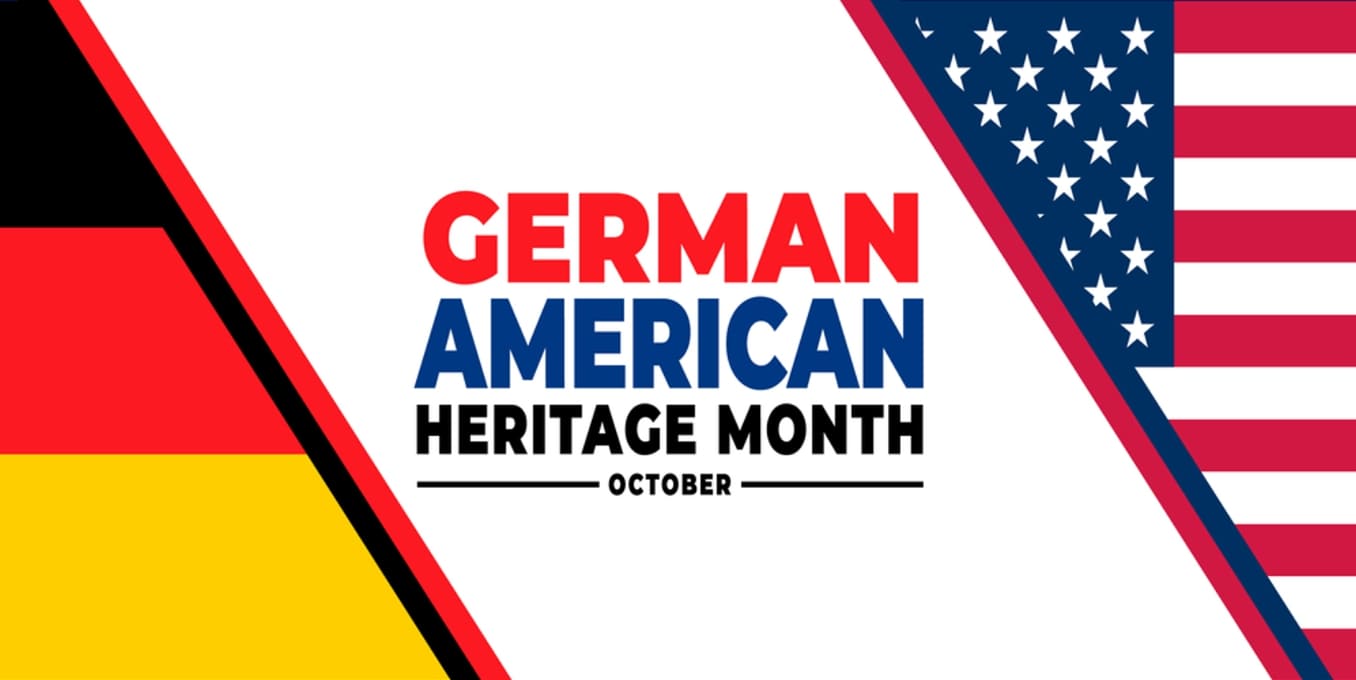Introduction: In this article – the second of a two-part series – Katie Rebecca Merkley again focuses on the experiences of German immigrants, to help with your research on German American ancestors. Katie has been running her own genealogy business since 2020. Her creative writing ventures include writing genealogy ghost stories.
In Part 1 of this two-part series, we explored why a German may have immigrated to America, to help with your research on German American ancestors. Whatever era your German ancestor left Germany, you can get to know them better by learning about their experiences. This article will explore what it may have been like for your German immigrant ancestor to come to America.

Illustration credit: https://depositphotos.com/home.html
Immigration Experience
Many of the early German immigrants traveled in sailing ships that were built for cargo rather than for passengers. Many of these ships carried over 300 passengers. It took at least six to eight weeks to cross the Atlantic. Many ancestors traveled in steerage, which was a horrible experience. It was usually crowded, dark, unsanitary, and foul-smelling.
By the early nineteenth century, ships were being made for passengers. Travel became easier with the advent of the steamship. The earliest steamship crossed the Atlantic in 1838, carrying 20 passengers, and completed the journey in 15½ days. The largest steamship in 1858 carried 4000 passengers. In the 1860s, steamships carried an average of 1500 passengers and took 8-9 days to cross the ocean.
Changes in laws affected the immigration experience. Such laws included passenger lists, the number of passengers based on the size of the boat, and the amount of provisions per passenger. Laws regarding passenger lists impact what we can find about our immigrant ancestors today. Passenger lists were first required in 1820. Laws in 1893 made passenger lists more detailed.
In 1820, the laws regarding provisions specified the amounts of water, salted provisions, vinegar, and hardtack per passenger. Laws in 1847 included space requirements and requirements that a berth be provided for each passenger. For the passenger counts, children under one were not counted, and two children under eight were counted as one person. The latter requirement was short-lived. In 1848, the provision laws included hardtack, rice, oatmeal, wheat flour, peas and beans, potatoes, vinegar, fresh water, salted boneless pork, and cooking fuel. Cooking ranges were also required based on the number of passengers, and ventilation was improved.
Why would vinegar be needed on a ship? Vinegar was used to flavor foods, kill bacteria in drinking water, and as a cleaning agent. Vinegar-soaked rags were also used as toilet paper.
An act in 1855 opened Castle Garden and required an inspector to inspect incoming ships and report to the collector of customs. Additionally, counting two children under eight as one person was brought back and the berth sizes for passengers was increased.
Laws in 1875 and 1882 prohibited “undesirable” immigrants – and added to the list of undesirables. Undesirable immigrants included criminals, prostitutes, and those likely to become dependent on society.
While the laws passed were meant to improve the travel experience, they were not enforceable. Additionally, the drinking water provided on ships was unsanitary. Not only did it become stale, but rodents fell in and drowned, algae grew in it, and barrels were filled with polluted water from ports.
While America passed laws regarding immigration, Germany passed laws regarding emigration. Laws on both ends affected the immigrant’s experience. Some ports of departure began keeping passenger lists. Many places required permission to emigrate, but not everyone obtained it before leaving. Bremen adopted passenger-friendly laws in 1832, which helped increase its popularity as a departure port. Hamburg followed slowly until 1850.
Emigration laws were not the only thing affecting the experience of emigration out of Germany. Many emigrants traveled down the Rhine to Rotterdam, Amsterdam, and Antwerp ports, but the rivers had tolls. Due to the road conditions, traveling the roads in wagons took two weeks. German states built roads primarily for internal traffic; consequently, they weren’t designed for traveling between the various states. What was a two-week trip then would take seven hours in a car on modern roads.
Travel conditions eventually improved. Tolls were removed in 1840. Meanwhile, the railroad expanded rapidly. In 1835, Germany only had eight miles of railroad; by 1845, its railway system was more extensive than France’s.
Upon arrival in the U.S., some immigrants encountered people who tried to exploit them. Swindlers would force indentured servitude upon newcomers with terms they didn’t understand by making them sign agreements written in English. The German Society of Maryland was formed to combat this abuse and monitored incoming ships bringing German immigrants. They built churches, schools, and orphanages. Surviving records have been donated to the Maryland State Archives. Mentions of them in newspaper articles can be found in GenealogyBank’s Historical Newspaper Archives by searching with the keywords “German Society of Maryland.”
Your Ancestor’s Experience
To learn about your ancestor’s experience coming to America, you must find records created around their immigration. You can search for their passenger list on FamilySearch or the National Archives and Records Administration (NARA). Once you’ve identified the ship they traveled on, you can Google that ship’s name to find a picture of it.
You can also search books and newspapers, including GenealogyBank’s historical books collection and newspaper collections.
Whenever your German immigrant ancestor arrived in the U.S., you can get to know them better by understanding their experience. This was the start of the German American heritage they passed on to you.
Explore over 330 years of newspapers and historical records in GenealogyBank. Discover your family story! Start a 7-Day Free Trial
Note on the header image: German and American flags. Credit: https://depositphotos.com/home.html
Related Articles:
- German American Culture & History (part 1)
- German American Culture & History (part 2)
- German American Genealogy: Immigration to America (part 1)
- Genealogy Tips: Records for German American Research (part 1)
- Genealogy Tips: Records for German American Research (part 2)
Resources:
- https://www.familysearch.org/rootstech/session/german-research-for-the-everyday-american
- https://familytreewebinars.com/webinar/the-voyages-of-our-german-immigrants/?search=german
- https://familytreewebinars.com/webinar/get-with-the-times-german-newspaper-research/?search=german
- https://familytreewebinars.com/webinar/the-palatine-immigrants-tracing-and-locating-18th-century-german-immigrants-online/?search=german
- https://familytreewebinars.com/webinar/searching-for-a-pennsylvania-german-ancestor/?sortby=newest&search=german
- https://familytreewebinars.com/webinar/is-this-the-end-taking-your-german-brick-walls-down-piece-by-piece/?sortby=newest&search=german
- https://familytreewebinars.com/webinar/german-names-and-naming-patterns/
- Buiter, A. S. (2020). Tracing Immigrants through the Port of New York: Early National Period to 1924. New York Genealogical and Biographical Society.
- Freilich, K. H. (2016). NGS Research in the States Series: Pennsylvania (B. V. Little, Ed.; 3rd ed.). National Genealogical Society.
- DeGrazia, L. M. (2013). NGS Research in the States Series: Research in New York City, Long Island, and Westchester County (B. V. Little, ed.). National Genealogical Society.
- Shawker, P. O. (2008). NGS Research in the States Series: Maryland (K. Freilich & A. C. Fleming, eds.). National Genealogical Society.
- Clint, F. (1976). Pennsylvania Area Key (2nd ed.). The Everton Publishers, Inc.
